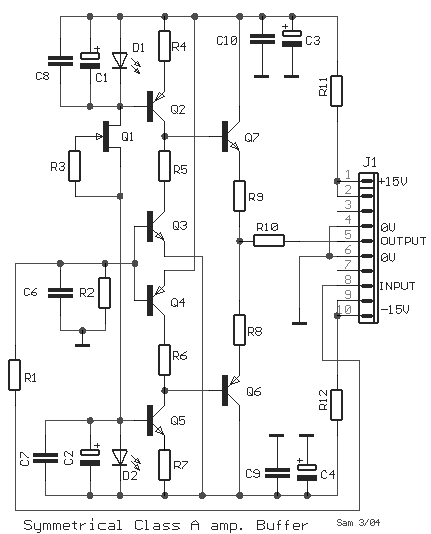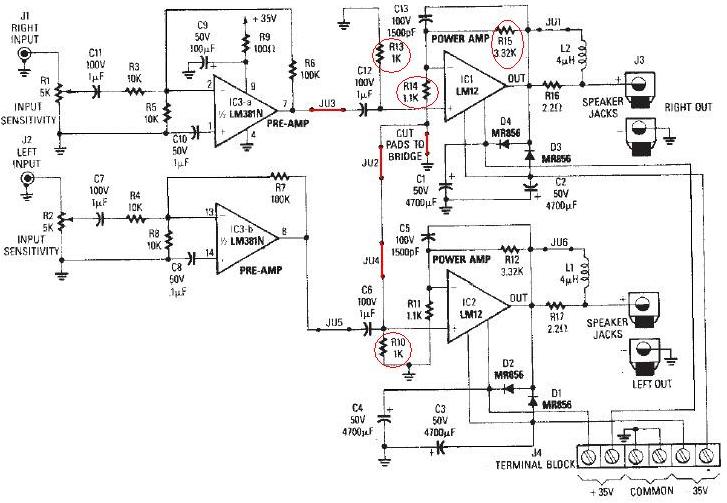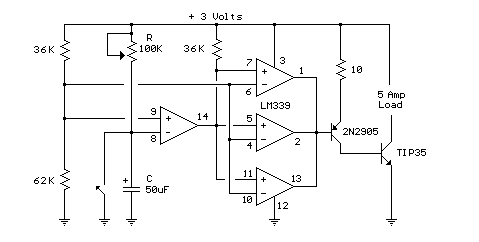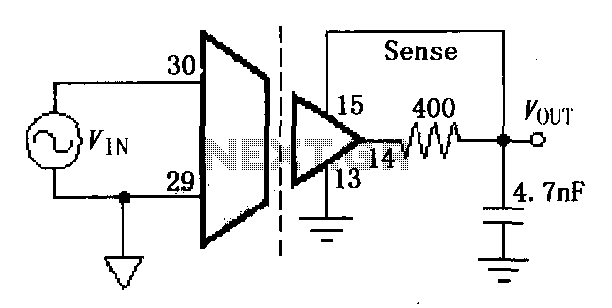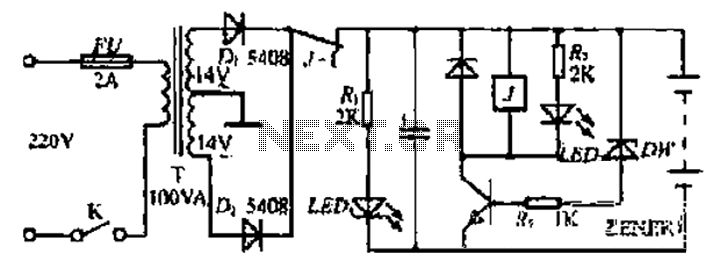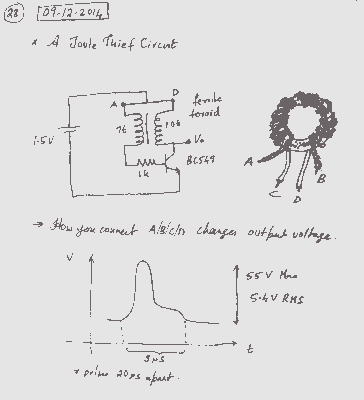
Intercom Circuit

This is a simple circuit design for a two-station intercom system utilizing common 8-ohm mini speakers. The press-to-talk switches should feature a spring-return mechanism to ensure that the intercom cannot be left in the ON position. The circuit requires a separate power supply for the speakers, which is key to preventing instability, such as motor-boating, in a high-gain circuit like this. Additionally, the design allows for the connection of one or two extra stations.
The intercom circuit employs two main components: the 8-ohm mini speakers and the press-to-talk (PTT) switches. Each station in the intercom system consists of a speaker and a PTT switch. When the PTT switch is pressed, it completes the circuit, allowing audio to be transmitted through the speaker. The spring-return feature of the PTT switch ensures that the circuit is only active while the button is pressed, thereby preventing unintended continuous transmission.
To maintain audio clarity and prevent issues such as motor-boating, a separate power supply is recommended for the speakers. This separation helps to isolate the audio circuit from the power supply variations that could introduce noise or instability in the system. The power supply should be capable of delivering the appropriate voltage and current required by the 8-ohm speakers, which typically operate at low power levels.
The intercom design is modular, allowing for the addition of extra stations. Each additional station can be connected in parallel to the existing stations, provided that the total load does not exceed the power supply capacity. Careful consideration should be given to the wiring layout to ensure that signal integrity is maintained across all connected stations.
In summary, this simple intercom circuit design is effective for basic communication needs, utilizing readily available components while ensuring reliable operation through proper power management and switch design.This is a simple form circuit for a 2-station intercom using common 8R mini speakers. The press-to-talk switches should have a spring-return so the intercom can never be left ON. This is the figure of the circuit; Power the speaker from a separate power supply is the secret to preventing instability (motor-boating) with a high gain circuit like this. An extra station (or two extra stations ) can be connected to this design. 🔗 External reference
The intercom circuit employs two main components: the 8-ohm mini speakers and the press-to-talk (PTT) switches. Each station in the intercom system consists of a speaker and a PTT switch. When the PTT switch is pressed, it completes the circuit, allowing audio to be transmitted through the speaker. The spring-return feature of the PTT switch ensures that the circuit is only active while the button is pressed, thereby preventing unintended continuous transmission.
To maintain audio clarity and prevent issues such as motor-boating, a separate power supply is recommended for the speakers. This separation helps to isolate the audio circuit from the power supply variations that could introduce noise or instability in the system. The power supply should be capable of delivering the appropriate voltage and current required by the 8-ohm speakers, which typically operate at low power levels.
The intercom design is modular, allowing for the addition of extra stations. Each additional station can be connected in parallel to the existing stations, provided that the total load does not exceed the power supply capacity. Careful consideration should be given to the wiring layout to ensure that signal integrity is maintained across all connected stations.
In summary, this simple intercom circuit design is effective for basic communication needs, utilizing readily available components while ensuring reliable operation through proper power management and switch design.This is a simple form circuit for a 2-station intercom using common 8R mini speakers. The press-to-talk switches should have a spring-return so the intercom can never be left ON. This is the figure of the circuit; Power the speaker from a separate power supply is the secret to preventing instability (motor-boating) with a high gain circuit like this. An extra station (or two extra stations ) can be connected to this design. 🔗 External reference
